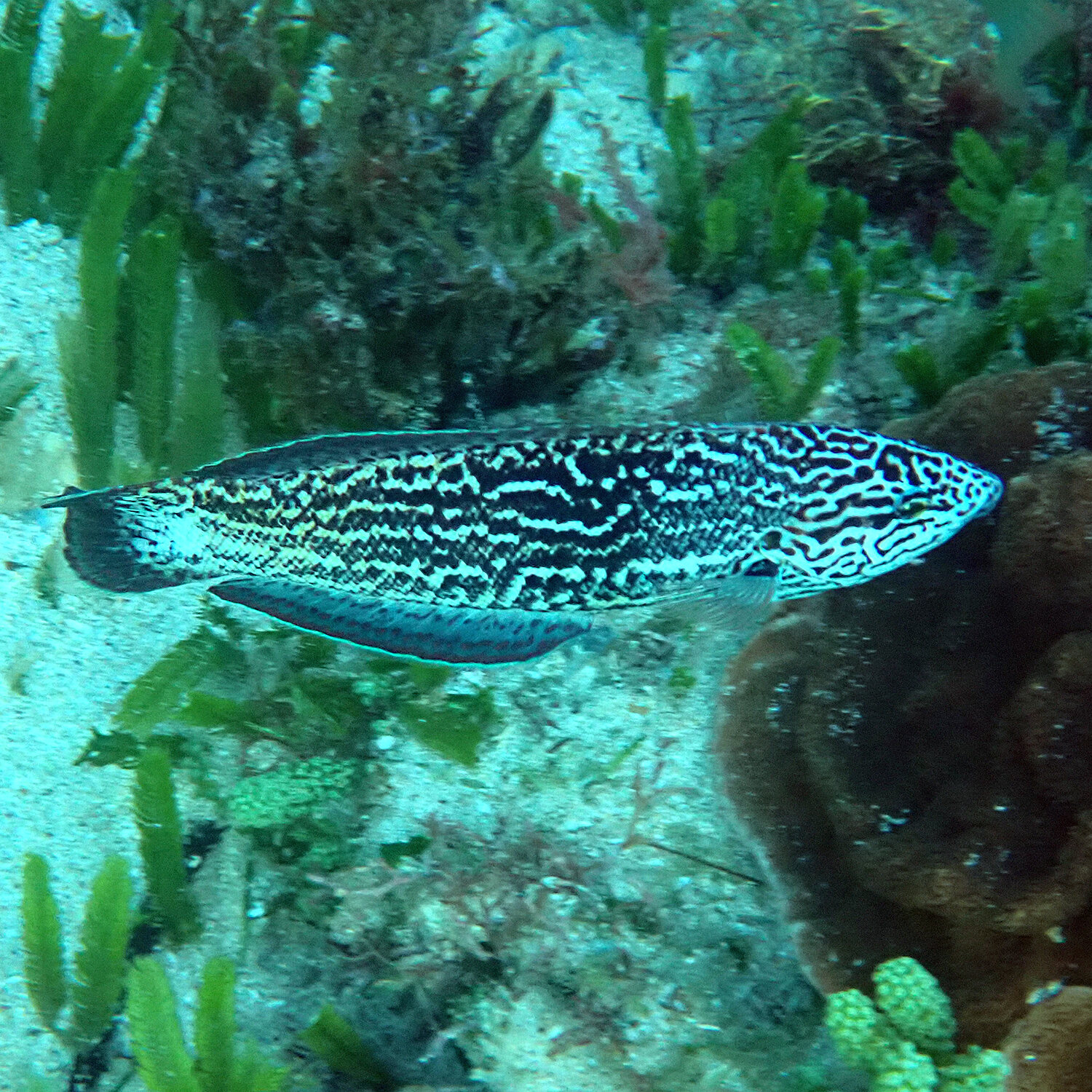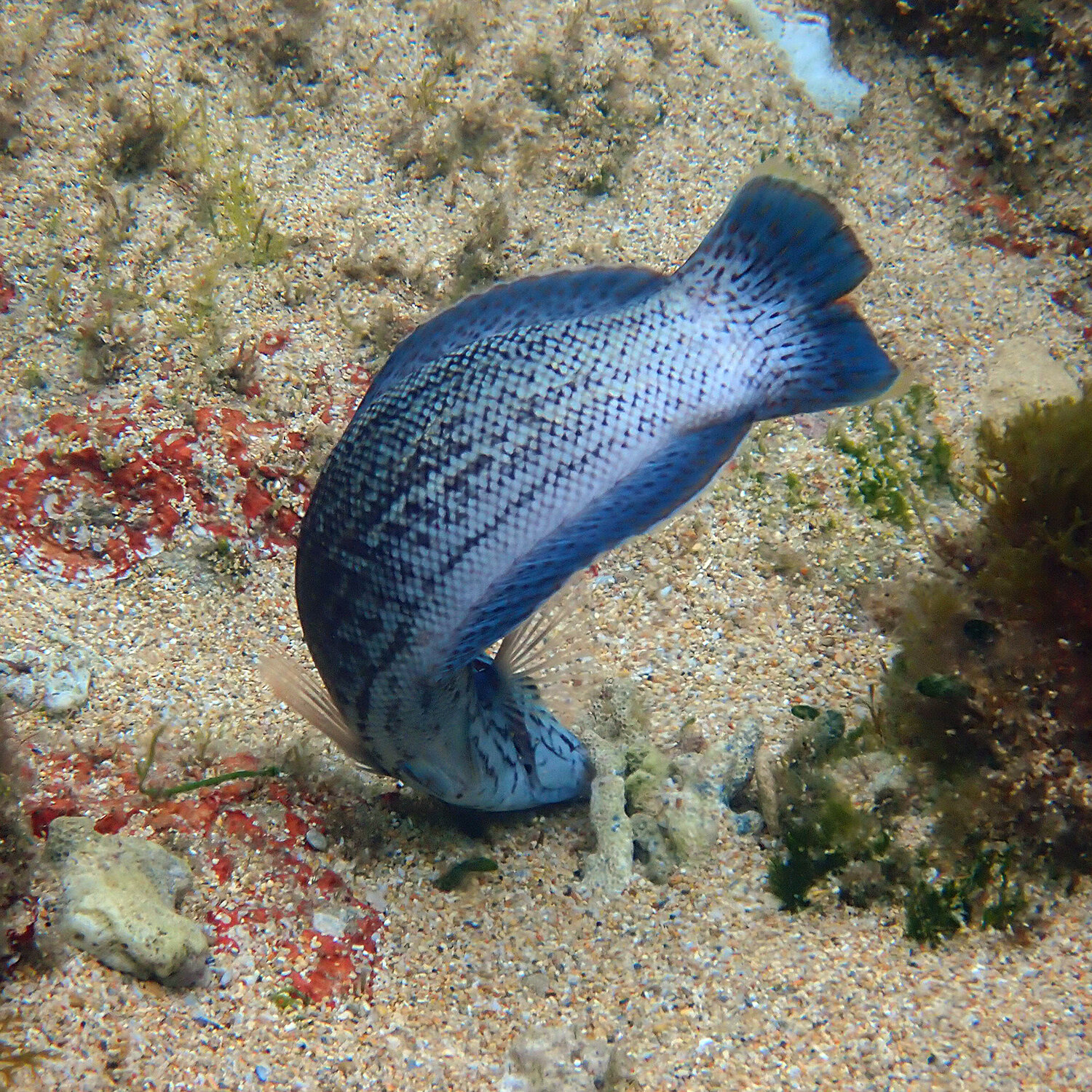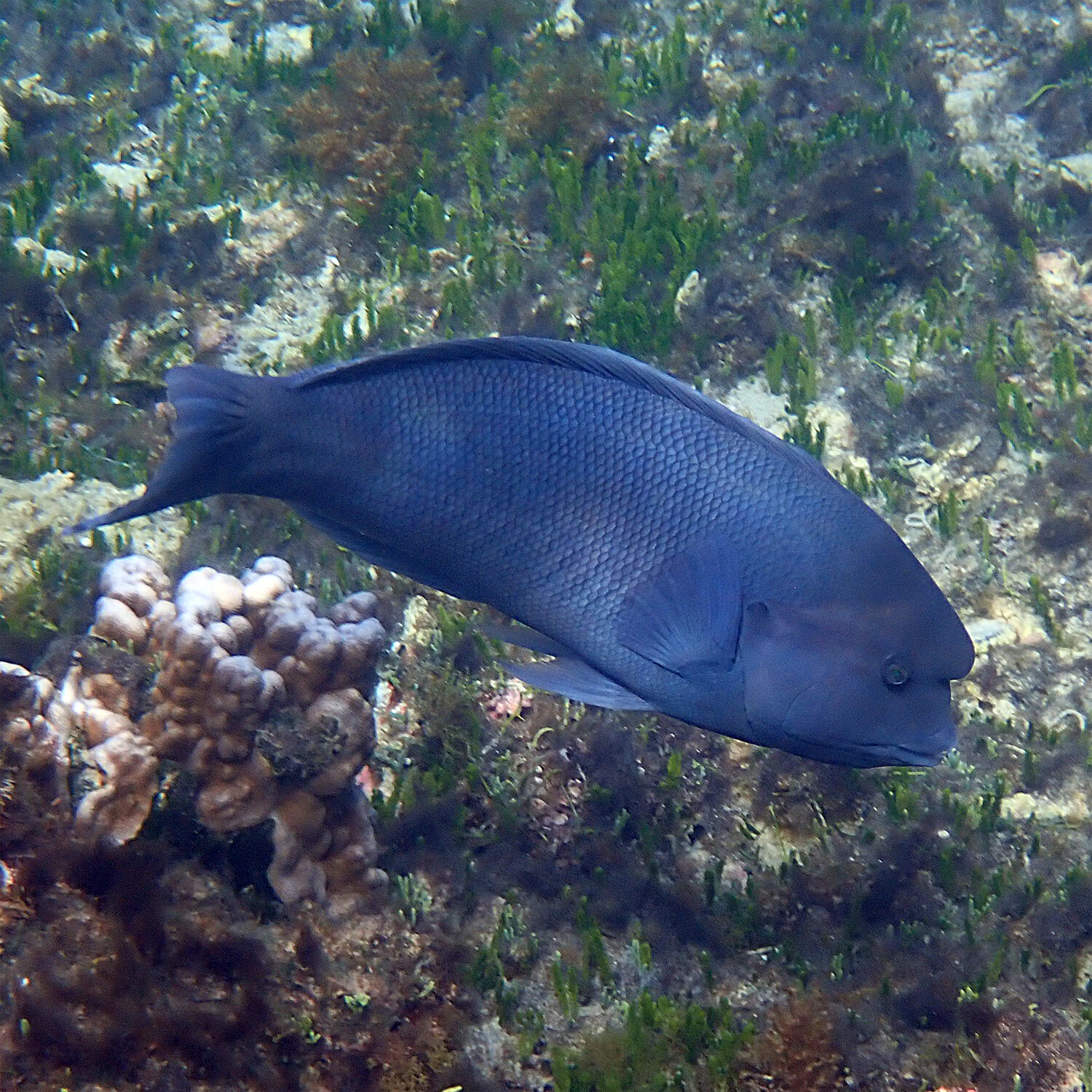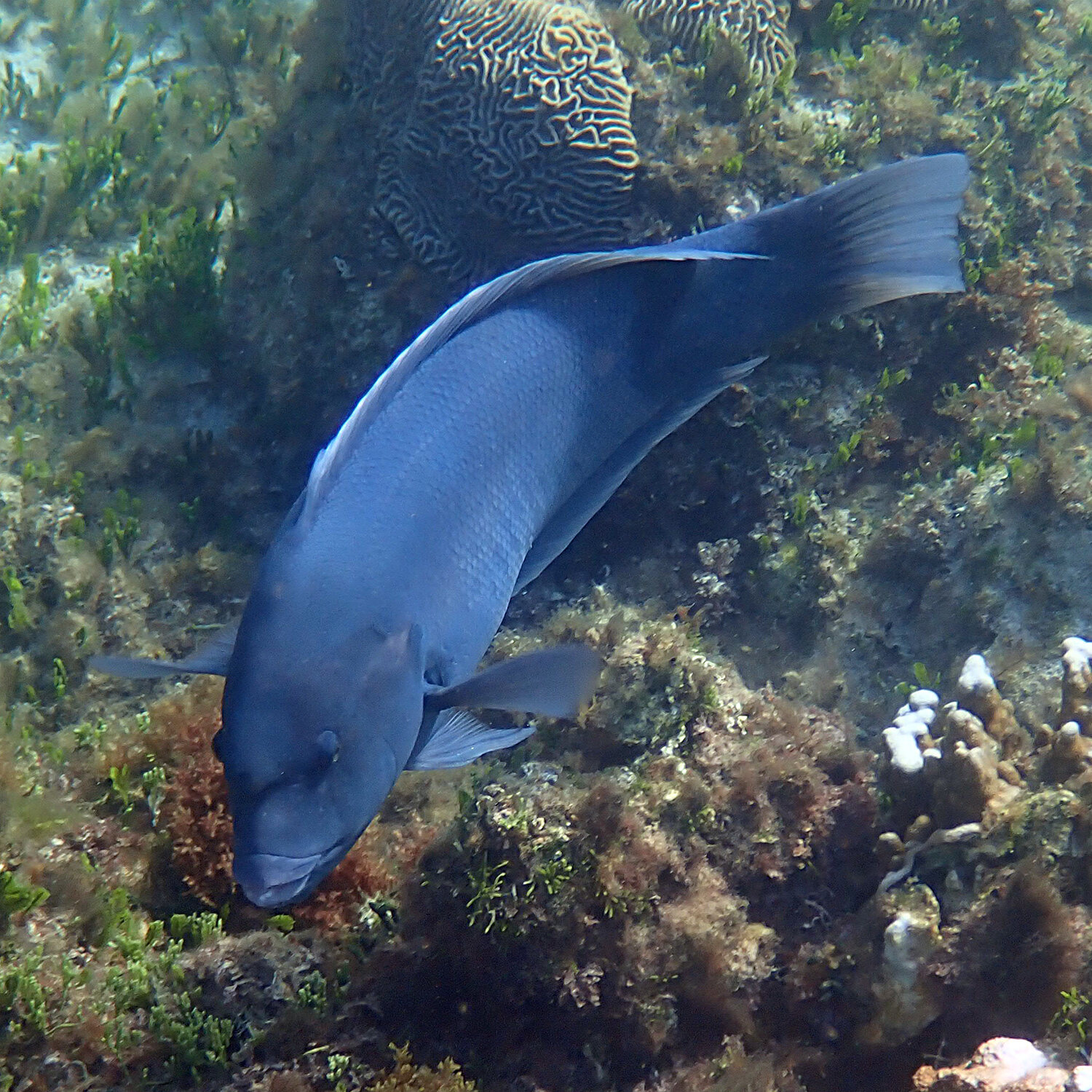Love these doubleheader wrasse, Coris bulbifrons. Beautiful deep smoky blue with a big bulge on their forehead, they will quite often just casually cruise on past. We have a handful of them in Slaughter and Emily Bays so your chances of seeing one are good. Like many wrasse, they change sex, colour and appearance quite radically as they age and grow. The juveniles sport a gorgeous black and white pattern, nothing at all like the adults. Then they morph to a grey and black pattern and then, finally, the blue of the adult phase.
They are partial to sea urchins (echinoderms), known locally as wunnas, and have a pair of protruding tea that they use to chomp them apart and get at the soft flesh, and their other fave, crustaceans.
Double headers are endemic to Norfolk Island and can grow up to 60 cm in length. The photos, below, follow their changing appearance as they grow.
And if you want to see the different kinds of sea urchins that we have in our lagoons, check out sea urchins page on here.













